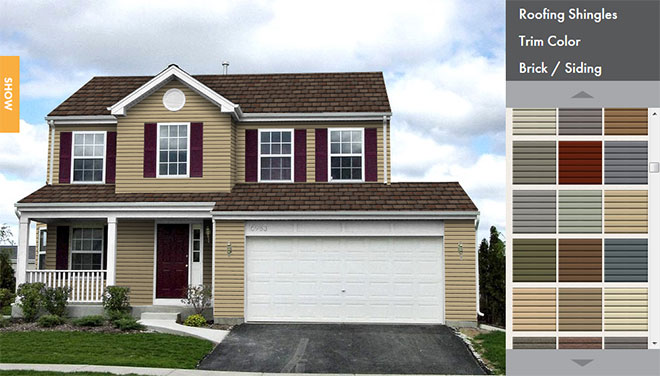Commercial Roof Systems Preventative Maintenance
A life of a building’s roof depends on several contributing factors including the quality of the materials, the quality of installation, and preventative maintenance to spot problems before they become large ones. Some roofs are designed for a life expectancy of 30-plus years while other roofs have a life expectancy of 10 years or less. Research proves that the number one reason why roofs do not survive their anticipated life cycles is the neglect of maintenance.
Identifying Common Roof Problems
Lack of maintenance and failure to correct minor roof deterioration in early stages is one of the major causes of premature roof problems. A good time to inspect your roof is in the spring; checking for any damage that may have occurred during the winter.
Here are some of the most common problems found on today’s roofs:
Blisters
Blisters form due to voids in the roof system. Voids can result from skips in bitumen mopping, entrapped debris, uneven substrates, un-relaxed membranes, or entrapped gases resulting from moisture in the materials. During the heat of the day, air and moisture trapped in the void expand. The pressure developed in the void stretches the warm flexible membranes and displaces them to form a blister. During the night, the membranes cool, become stiff, and resist returning to their original shape. This process creates a partial vacuum within the blister, and more air is drawn into the blister through micro-cracks in the membranes. A few blisters do not generally lead to problems, as long as the blisters remain intact (watertight) and do not become too large. If a blister is ruptured, water can attack the reinforcement/bitumen interface and degrade the membrane strength. Therefore, it is important not to break blisters. People should avoid stepping on them, particularly when the membrane is cold. If rupture occurs, the blister becomes too large, or the blister pulls the seam apart, a repair is recommended.
Ponding Water
Improper roof installations can produce voids in the membrane, block drains, and result in ponding water. Other causes could be HVAC units without condensate drain lines, drains that are blocked by dirt or debris, or an improper slope. UV Rays compounded by ponding water can have adverse effects on roofs. Before roof repairs are hastily made, the source of the ponding water should be investigated. Always inspect for causes listed above thoroughly before making a repair.
Inadequate Supports for Rooftop Equipment
Often, the rooftop is used as a platform for all types of mechanical equipment, ladder struts, antennas, flag poles, signs, bracing, etc. These items should not be placed on the rooftop except when absolutely necessary. They should never be mounted or placed directly to the top of the roof membrane. Rather, they should be mounted to a support structure or to raised curb-type supports. Flat flange or curb flashings can then be used to keep the roof watertight, and roof replacement and recovering can be done without disturbing or removing the equipment.
Penetration Flashings
Penetrations through the roof membrane are usually flashed in one of two ways. Individual pipes and small vents usually use flat metal-flanged flashings that are placed directly on the top roofing material and stripped in. Larger penetrations and groups of smaller penetrations usually use curbs constructed of wood, metal, or concrete, flashed in, and have metal counter flashings installed.
Common problems are:
- Failure to properly design the flashing for the penetration
- Open or broken seams in metal curbs caused by expansion and contraction
- Standing water behind penetration curbs caused by the omission of crickets
- Sagging or separating base flashings caused by omission of top wood nailers.
- Missing or deteriorated counter flashing
- Splitting or separation of the stripping over the edge of metal flanges
- Improper priming and stripping of metal surfaces
- Fastener back out and separation of metal flange from the roof around penetration flashings
- Movement between stack vents or pipes and the flashing
Surface Deterioration
All roofing materials deteriorate from exposure to the weather at rates determined largely by the kind of material and the conditions of exposure. Inorganic materials generally tend to deteriorate less rapidly than organic materials. If areas of deterioration are evident, inspect the membrane for possible moisture infiltration.
Fastener Back-Out
Back-outs are generally caused by inadequacies with shank length, nature of drill point, thread design, stress plate and fastener head. If back-outs are noticeable, evaluate the roof system to assess whether or not other back-outs are likely. If a large number of fasteners have backed out or are starting to back-out, reroofing, rather than repair may be needed and should be considered.
Preventative Roof Maintenance
Roof care and preventive maintenance should be on every business or building owners’ “To Do” list. This is an effective way to stop roof problems before they start and fix existing problems before it’s too late. Proper maintenance also prolongs the life of the roof.
Semi – Annual Roof System Preventative Maintenance includes the physical inspection of an existing roofing system to determine its current condition, detect weaknesses and failures, and identify any potential problems. Regularly scheduled inspections allow our technicians to assist owners in protecting their roof investments by seeking to identify damages in its early stages.
Also part of a Roof’s Preventative Maintenance semi – annual inspection, light maintenance should be performed on each roof. This includes, but is not limited to:
- Re-attach any loose metal edge cover
- Clean drain grates
- Remove debris from roof
- Replace loose or missing caulk
- Replace loose or dislodged shrouds and pipe covers
- Redistribute ballast that may have moved
- Clean blocked scuppers
Business owners and property managers contribute to the early demise of their own roofs by not properly maintaining them and failing to repair small problems, before they become big ones. Consult a roofing professional to assist in determining the health and remaining life of the roof and discuss options about potential roof problems.
In today’s economy, prolonging the life of a roof is a prudent business decision. Remember that a little maintenance can result in a lot of savings, especially when compared to the cost of replacing the roof.
Is your commercial or industrial flat roof in need of maintenance, repair or replacement? Do have questions about your building’s condition? Consult a reputable Minnesota Commercial Roofing Contractor that has experience in commercial roof systems.


 Click Here
Click Here Click Here To Use
Click Here To Use